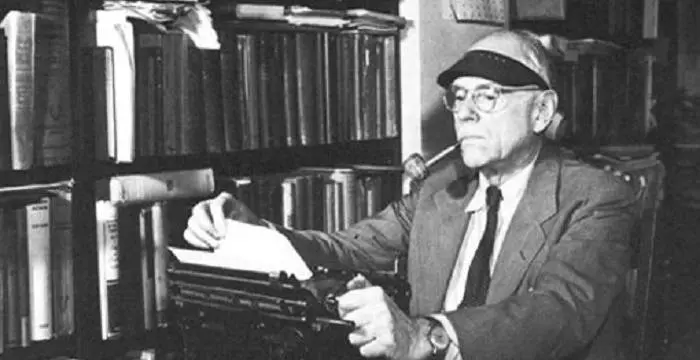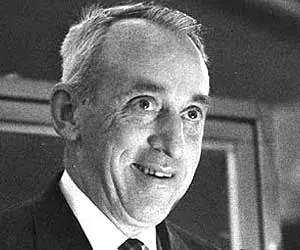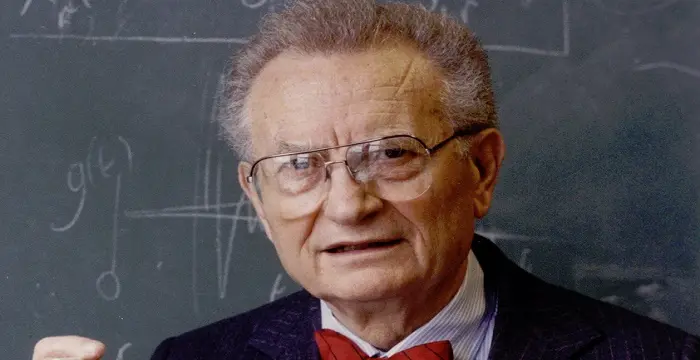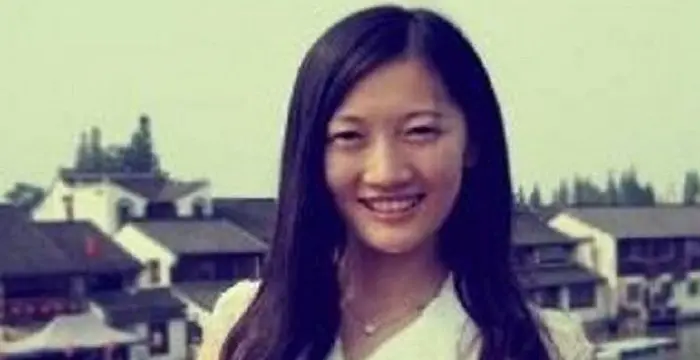
James Tobin - Intellectuals & Academics, Timeline and Life
James Tobin's Personal Details
James Tobin was one of the foremost economists of the late 20th century
| Information | Detail |
|---|---|
| Birthday | March 5, 1918 |
| Died on | March 11, 2002 |
| Nationality | American |
| Famous | Harvard University, Intellectuals & Academics, Economists |
| Spouses | Elizabeth Fay Ringo |
| Childrens | Hugh Ringo, Louis Michael, Margaret Ringo, Roger Gill |
| Universities |
|
| Notable Alumnis |
|
| Birth Place | Champaign |
| Gender | Male |
| Father | Louis Michael Tobin |
| Mother | Margaret Edgerton Tobin |
| Sun Sign | Pisces |
| Born in | Champaign |
| Famous as | Economist |
| Died at Age | 84 |
// Famous Intellectuals & Academics
Bertil Gotthard Ohlin
Bertil Gotthard Ohlin was a famous Swedish economist. This biography profiles his childhood, family life & achievements.
Emily Greene Balch
Emily Greene Balch was an American economist, sociologist and pacifist who won the 1946 Nobel Peace Prize. This biography of Emily Greene Balch provides detailed information about her childhood, life, achievements, works & timeline.
Martin Buber
One of the greatest philosophers to have ever walked on earth, Martin Buber contributions to philosophy is a long-standing one. Explore all about his profile, childhood, life and timeline here.
James Tobin's photo
Who is James Tobin?
Sometimes the true worth of a person can be gauged from the legacy he/she leaves behind. James Tobin is one such man whose lifelong work in economics has left a lasting influence on how we understand the behavior of financial markets. Born into a middle-class, educated and liberal family, Tobin, from his childhood was exposed to intellectual dialogue, which helped shaped his career and mold his thoughts. He was very much interested in economics as he thought that it offered hope to better mankind. It was his growing up years in the 1930s, during the Great Depression, a time of social and political crisis, which had a great influence on his thought. He reasoned, correctly, that the failure of capitalist economics was the main reason for much of the economic disasters facing the world. So, in that time of crisis, he too became a trigger that started a revolution in economic theory, partly as a challenge to the economic orthodoxy prevalent at that time. Nowadays, many of his theories have become standard applications in financial models and his works have become standard topics in the subject of economics. To know more on one of the most brilliant thinker of our times, continue reading the biography further.
// Famous Economists
Bertil Gotthard Ohlin
Bertil Gotthard Ohlin was a famous Swedish economist. This biography profiles his childhood, family life & achievements.
Emily Greene Balch
Emily Greene Balch was an American economist, sociologist and pacifist who won the 1946 Nobel Peace Prize. This biography of Emily Greene Balch provides detailed information about her childhood, life, achievements, works & timeline.
Paul Samuelson
Nobel laureate Paul Anthony Samuelson is referred to as the ‘Father of Modern Economics’. This biography profiles his childhood, life, career, achievements and interesting facts about him.
Biography detail
James Tobin Childhood
James Tobin was born in the year 1918 to Louis Michael Tobin and Margaret Edgerton Tobin in the city of Champaign, Illinois. His father was a journalist while his mother was a social worker. It was from his mother, who told him firsthand accounts of relief emergency, he learned about the sufferings caused by poverty and unemployment. Tobin regarded his father to be his greatest teacher who was intellectual, inquisitive and learned. From childhood, his parents exposed him and his brother to different political views, which was considered quite eccentric and radical in the conservative society of his homeland.
He completed his elementary and intermediate studies from his neighborhood and then went on to study at the University Laboratory High School in the twin city, Urbana. At the University High, he was included into the basketball team that enabled him to fulfill his athletic ambitions. Though Tobin took for granted that he would have to attend the local university and later study law, on the advice of his father he sat for the Harvard University entrance exams and was admitted, in 1935, with a scholarship. His father, who habitually read the New York Times, learned in it that Harvard was inaugurating new scholarships to diversify the students.
Higher Education And War Years
He graduated summa cum laude in 1939. After his Harvard baccalaureate, he decided to travel for a year or two for which he was granted a travelling fellowship. However, the outbreak of the World War in 1939 ruined his plans. He then spent the next two years as a graduate student at Harvard. During the six years he spent at Harvard, he not only cultivated lifelong friends from diverse backgrounds, but also had the opportunity to study under the instructions of some of the most talented professors of the University like Joseph Schumpeter, Alvin Hansen, Seymour Harris, Edward Chamberlin, Edward Mason, Gottfried Haberler, Sumner Slichter, and Wassily Leontief. Harvard, in those pre-war days, was the center of intellectual activity and Tobin was absorbed into the intense political debate in the campus. He worked and became friends with the likes of John Kenneth Galbraith, Lloyd Metzler, Abram Bergson and Paul Samuelson, who went on to become famous economists like him later.
In the spring of 1941, James Tobin left Harvard. The same year he submitted his first article for a seminar, which was based on his thesis, on the statistical forecasting for economic mobilization. On the recommendation of Ed Mason, for whose seminar he had written the paper, he got a job at the Office of Price Administration and Civilian Supply and the War Production Board in Washington, D.C. There his main responsibility was to set quotas on restricting civilian uses, which were required for defense production as the US was preparing to enter the World War II. The next year, after the US entered the War, he joined the US Naval Reserve as an officer and trained for ninety days at the dormitory of the Columbia University. There his friends were the novelist Herman Wouk and the lawyer Cyrus Vance. Tobin was inducted into the U.S.S Kearney, which was engaged in convoy escort and anti-submarine activity in the Atlantic and the Mediterranean. His destroyer was also engaged in North Africa, Southern France and in the Italian campaign. He spent four years as a line officer, eventually becoming the executive officer. He always cherished his war experience, as it was radically different from his academic life.
Post War
After the war, he decided to try his luck in Washington where a few opportunities beckoned him. However, at that time, he received a letter from Harold H. Burbank, the Harvard Economics chairman, who convinced him to pursue academics. So, in 1946, Tobin returned to Harvard and completed his Ph.D., in 1947. The same year he was elected a Junior Fellow of Harvard’s Society of Fellows. So, for the next three years, he had the funding to study as well as do research and write. His Junior Fellowship years were very eventful. He not only caught up with whatever he missed during the war years in economics, but also wrote extensively on macroeconomics and other topics for various publications. During those years, he also co-authored a sociological-economic book called the ‘American Business Creed’. From 1949 to 1950, he visited the Department of Applied Economics, Cambridge, in England. There he has some fruitful collaboration with Hendrik Houthakker and Michael Farrell.
Academy
James Tobin was attracted to economics because of his fascination and talent for quantitative analysis and theoretical reasoning. However, it was only in 1936, at the start of his sophomore year, that a young tutor introduced him to John M. Keynes’s General Theory of Employment, Interest and Money. This fuelled his interest so much that he did his graduation thesis on a critical analysis of Keynes’ mechanism for introducing equilibrium “involuntary” unemployment. Later, during his M.A., he was supervised by noted economists like Alvin Hansen, Joseph Schumpeter and Gottfried Haberler, In 1950, after the end of his fellowship at Harvard, he moved to Yale University. During this time, he also started writing articles specifically meant for lay readers on the current economic policies. These articles were collected and published in 1966 as the National Economic Policy. In 1955, he was elected as the President of the Cowles Foundation, a position he held till 1961. He also served as the President of that foundation from 1964 to 1965. At Yale and the Cowles Foundation, he was actively into research in providing micro-foundations to Keynesian economics. His special focus was on monetary economics. In 1957, he became the Sterling Professor at Yale.
James Tobin was also actively involved in public life, apart from his career as a teacher and researcher. He served in various bodies as an economic expert and policy consultant and wrote extensively on current economic issues. In 1961, he was nominated by John F. Kennedy to the Council of Economic Advisors (CEA) and he served in that agency till 1962 under the chairmanship of Walter Heller and then acted as a consultant till 1968. At the CEA, he was instrumental in developing the Keynesian economic policy along with other stalwarts like Kenneth Arrow, Arthur Okun and Robert Solow. Together they published their magnum opus the Economic Report in 1962, which the media dubbed as the ‘new economics’. The policy they designed was implemented to great success by the Kennedy administration. He also had the opportunity to serve as consultant to the US Treasury Department as well as serving several terms in the Board of Governors of Federal Reserve System Academic Consultants. He served as the Chairman of the New Haven City Plan Commission from 1966 to 1970 and, in 1971, he was elected the President of the American Economic Association. Throughout his career, he was a fellow of many professional associations and was also the trustee of Economists for Peace and Security. His seminal article, ‘Is Growth Obsolete?’ that he co-authored with fellow economics professor William Nordhaus was published in 1972. In the paper, the authors introduced the first model for economic sustainability assessment and economic sustainability measurement defined as the Measure of Economic Welfare.
He retired from Yale in 1988. For his contributions to the field of economics Tobin was conferred several prestigious awards, the most noted being the John Bates Clark Medal in 1955 and the Nobel Prize in Economics in 1981 for his “analysis of financial markets and their relations to expenditure decisions, employment, production and prices”.
Personal Life And Death
In September 14, 1946, James Tobin married Elizabeth Fay Ringo whom he had met at Cambridge during spring the same year and they had four children: Margaret Ringo, a fashion designer; Louis Michael and Hugh Ringo, both lawyers and Roger Gill, a student of physics. He died in March 11, 2002 in Connecticut and his wife passed away in late June, 2009.
Selected Published Works
1941: “A note on the money wage problem”. Quarterly Journal of Economics
1955: “A Dynamic Aggregative Model”. Journal of Political Economy
1956: “The Interest-Elasticity of Transactions Demand for Cash”. Review of Economics and Statistics
1958: “Estimation of relationships for limited dependent variables”. Econometrica
1958 – “Liquidity Preference as Behavior Towards Risk”. Review of Economic Studies
1961 – “Money, Capital and Other Stores of Value”. American Economic Review
1969 – “A General Equilibrium Approach to Monetary Theory”. Journal of Money, Credit, and Banking
1970 – “Money and Income: Post Hoc Ergo Propter Hoc?” Quarterly Journal of Economics
1977 – “Asset Markets and the Cost of Capital” with William C. Brainard. Economic Progress: Private Values and Public Policy
1992 – “Money”. The New Palgrave Dictionary of Finance and Money
1998 – “Money, Credit and Capital” with Stephen S. Golub.
Positions Held
1941–42: Economist, Office of Price Administration and Civilian Supply and War Production Board, Washington, D.C.
1942–46: U.S. Navy (line officer, Destroyer). Entered service in April 1942 and was separated in January 1946 with rank of Lieutenant. Naval Reserve, inactive status, 1946–55.
1946–47: Teaching Fellow in Economics, Harvard University.
1947–50: Junior Fellow, Society of Fellows, Harvard University (year 1949–50 spent at University of Cambridge, England, Dept. of Applied Economics).
1950–55: Associate Professor of Economics, Yale University.
1953: Visiting Research Associate, Survey Research Center, University of Michigan
1955: Professor of Economics, Yale University; Sterling Professor, 1957; Emeritus, 1988
1955: Member, Cowles Foundation for Research in Economics at Yale University; Director, 1955–61; Acting Director, 1964–65.
1961–62: Member, President’s Council of Economic Advisers, Washington, D.C. 1968–69
1974–78: Chairman, Dept. of Economics, Yale University
1972–73: Visiting Professor, Univ. of Nairobi, Institute for Development Studies, Kenya
1978: Visiting Professor, University of Minnesota
1983: Ford Visiting Research Professor, University of California, Berkeley, Dept. of Economics
1992: Lecturer in Economics, Spring term, School of Organization and Management, Yale University.
1992: P.K. Seidman Distinguished Visiting Professor of International Studies, Rhodes College, Memphis, TN.
1996: Lecturer in Economics, Spring term, Yale University
// Famous Harvard University
Bertil Gotthard Ohlin
Bertil Gotthard Ohlin was a famous Swedish economist. This biography profiles his childhood, family life & achievements.
Xi Mingze
Xi Mingze is the daughter of Chinese Leader Xi Jinping, Check out this biography to know about her birthday, childhood, family life, achievements and fun facts about her.
Susan Sontag
Susan Sontag is an American critical essayist, cultural analyst, novelist, political activist, filmmaker and playwright of international repute. Read on to find out more about her childhood, career, profile and timeline.
James Tobin's awards
| Year | Name | Award |
|---|---|---|
Other | ||
| 0 | 1955 - John Bates Clark Medal | |
| 0 | 1981 - Nobel Prize in Economics | |
// Famous Pisces Celebrities peoples
Christine Baumgartner
Christine Baumgartner is an American model and the wife of famous American actor Kevin Costner. Check out this biography to know about her birthday, childhood, family life, achievements and fun facts about her.
Galina Becker
Galina Becker is a former athlete and fitness model from America. Check out this biography to know about her birthday, childhood, family life, achievements and fun facts about her.
Nikkie De Jager
Check out all that you wanted to know about Nikkie De Jager, the famous Dutch Makeup artist; her birthday, her family and personal life, her boyfriends, fun trivia facts and more.
Annie Bakes
Annie Bakes is an American adult model and the ex-wife of Dennis Rodman. Check out this biography to know about her birthday, childhood, family life, achievements and fun facts about her.
Jordyn Jones
Jordyn Jones is an American dancer. Let’s have a look at her family & personal life including age, date of birth, boyfriends, net worth, and fun facts.
Oscar Rosenstroem
Oscar Rosenstroem is a Danish Musical.ly star. Let’s have a look at his family and personal life including age, date of birth, girlfriends, net worth and fun facts.
James Tobin's FAQ
What is James Tobin birthday?
James Tobin was born at 1918-03-05
When was James Tobin died?
James Tobin was died at 2002-03-11
Where was James Tobin died?
James Tobin was died in New Haven
Which age was James Tobin died?
James Tobin was died at age 84
Where is James Tobin's birth place?
James Tobin was born in Champaign
What is James Tobin nationalities?
James Tobin's nationalities is American
Who is James Tobin spouses?
James Tobin's spouses is Elizabeth Fay Ringo
Who is James Tobin childrens?
James Tobin's childrens is Hugh Ringo, Louis Michael, Margaret Ringo, Roger Gill
What was James Tobin universities?
James Tobin studied at Harvard University, University Laboratory High School, Harvard University
What was James Tobin notable alumnis?
James Tobin's notable alumnis is Harvard University
Who is James Tobin's father?
James Tobin's father is Louis Michael Tobin
Who is James Tobin's mother?
James Tobin's mother is Margaret Edgerton Tobin
What is James Tobin's sun sign?
James Tobin is Pisces
How famous is James Tobin?
James Tobin is famouse as Economist












